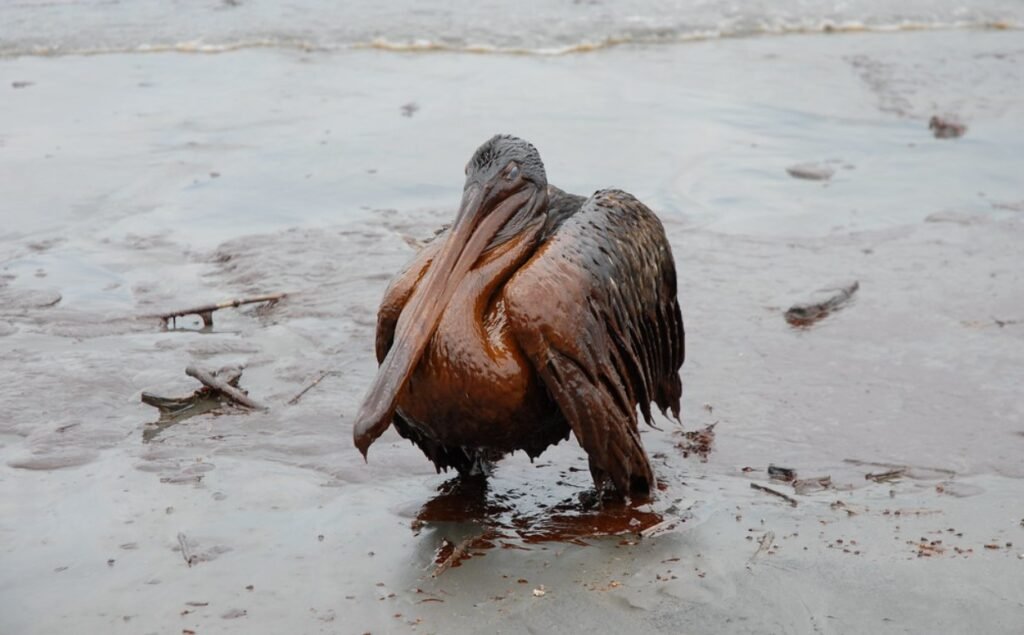A massive oil spill in the Gulf of Mexico, estimated to be more than 1 million gallons, has been detected off the coast of Louisiana, posing a serious threat to the marine life and the environment. The spill, which was first reported on Friday by the U.S. Coast Guard, is believed to be coming from an underwater pipeline owned by Talos Energy, a Houston-based company. The source of the leak has not been identified yet, and the cause of the spill is under investigation.
The extent of the spill and the response efforts
The oil spill covers an area of about 13 miles by 2 miles, according to satellite images from the National Oceanic and Atmospheric Administration (NOAA). The spill is located near a 67-mile-long pipeline system that connects several oil platforms in the Bay Marchand area of the Gulf of Mexico. The pipeline system was damaged by Hurricane Ida, which struck Louisiana in late August, causing widespread power outages and flooding.

The Coast Guard and Talos Energy have deployed several vessels and aircraft to contain and clean up the spill, using skimmers, booms, and dispersants. Talos Energy said it has hired Clean Gulf Associates, a non-profit group that responds to oil spills, to help with the response. The company also said it has contracted a team of private divers to locate the source of the leak and stop it.
The Coast Guard said it is working closely with Talos Energy and other state and federal agencies to monitor the situation and minimize the impact of the spill. The Coast Guard also said it is conducting an investigation to determine the cause of the spill and hold the responsible parties accountable.
The impact of the spill on the wildlife and the environment
The oil spill poses a serious risk to the wildlife and the environment in the Gulf of Mexico, which is home to many endangered and threatened species, such as sea turtles, dolphins, whales, and birds. The spill also threatens the livelihoods of the coastal communities that depend on fishing, tourism, and recreation.
The oil spill could harm the marine life by coating their skin, feathers, or fur, impairing their ability to regulate their body temperature, swim, fly, or breathe. The oil could also contaminate their food sources, causing poisoning or starvation. The oil could also damage the habitats and ecosystems that support the biodiversity and productivity of the Gulf of Mexico, such as coral reefs, seagrass beds, and wetlands.
The oil spill could also affect the human health and safety by polluting the air, water, and soil. The oil could release toxic chemicals and gases, such as benzene and hydrogen sulfide, that could cause respiratory problems, headaches, nausea, or cancer. The oil could also contaminate the seafood and drinking water, causing gastrointestinal illnesses, skin rashes, or liver damage. The oil could also increase the risk of fire or explosion, especially near the oil platforms or pipelines.
The history of oil spills in the Gulf of Mexico
The oil spill in the Gulf of Mexico is not the first one to occur in the region, which is one of the most active oil and gas production areas in the world. In 2010, the Deepwater Horizon oil rig exploded and sank, releasing about 4.9 million barrels of oil into the Gulf of Mexico, in the largest marine oil spill in history. The spill caused severe environmental and economic damages, affecting millions of people and animals. The spill also triggered a series of lawsuits, investigations, and regulations, aimed at improving the safety and accountability of the oil and gas industry.
In 2023, another oil spill occurred in the Gulf of Mexico, after Hurricane Ida damaged several oil platforms and pipelines. The spill, which was reported by the Coast Guard in September, released about 2,100 gallons of oil into the water, near Port Fourchon, Louisiana. The spill was contained and cleaned up by the responsible company, W&T Offshore, within a few days.
The oil spill in the Gulf of Mexico highlights the need for more stringent oversight and enforcement of the oil and gas industry, as well as more investment and innovation in renewable and clean energy sources, to reduce the dependence on fossil fuels and the risk of environmental disasters.
